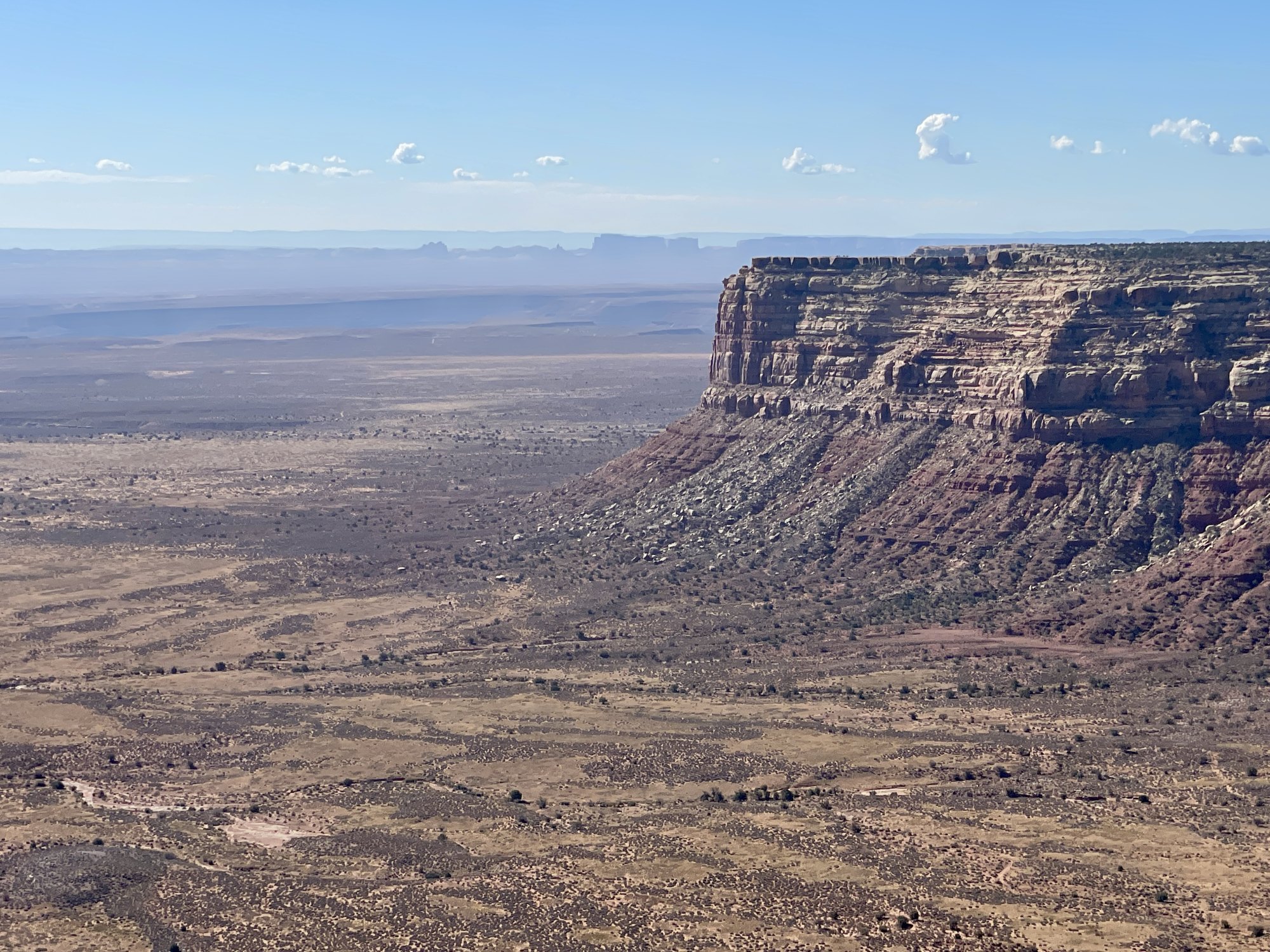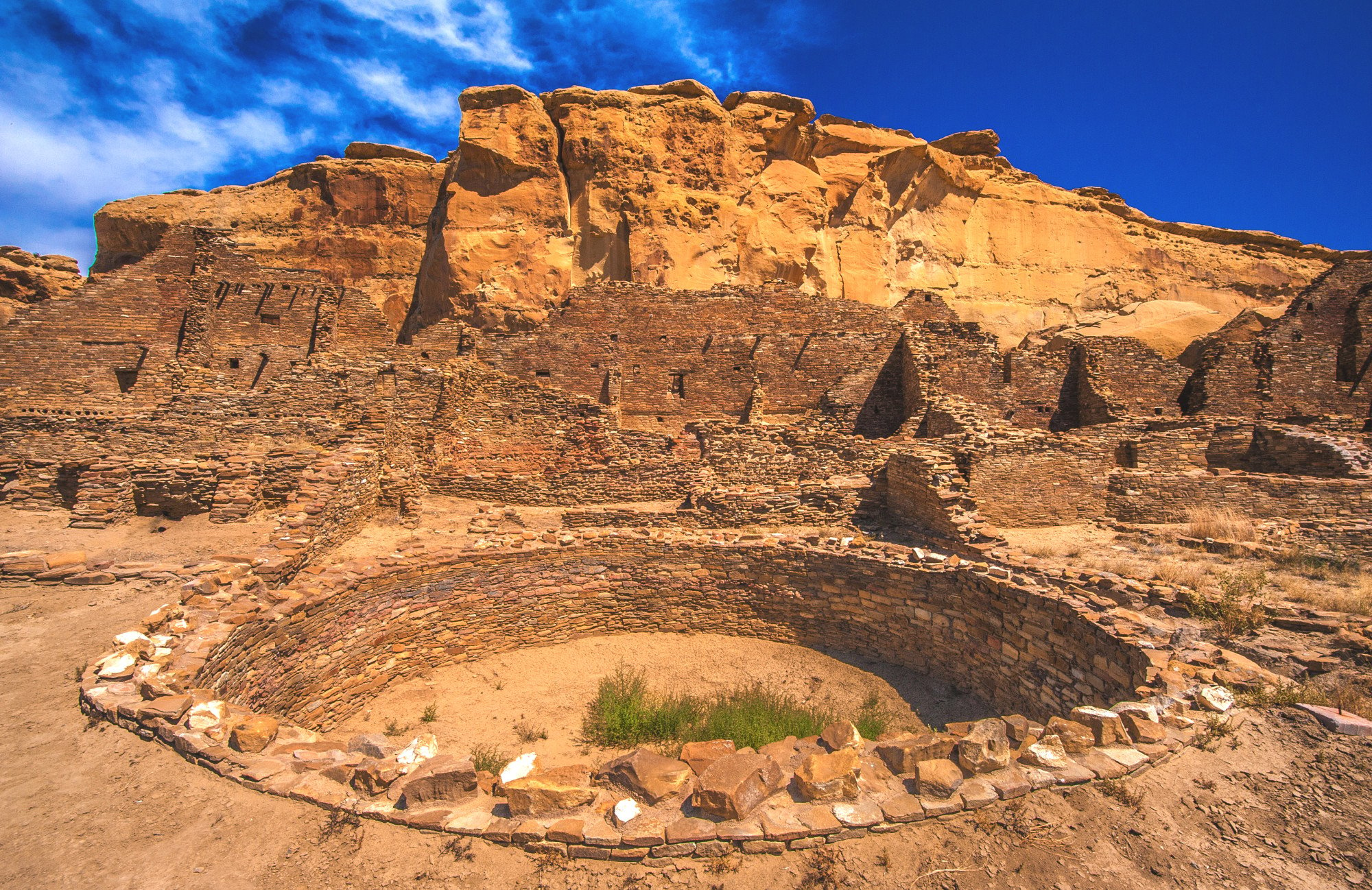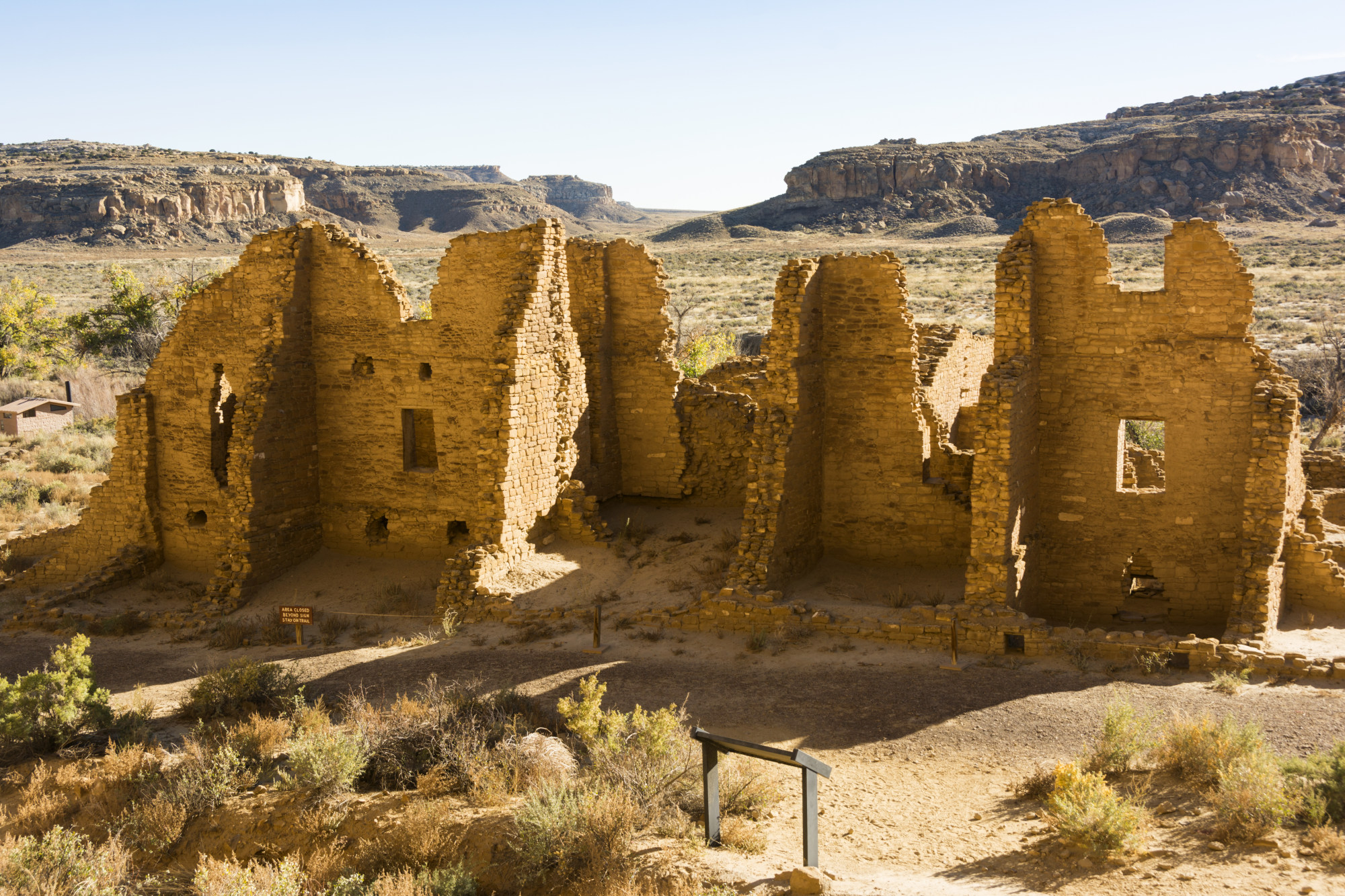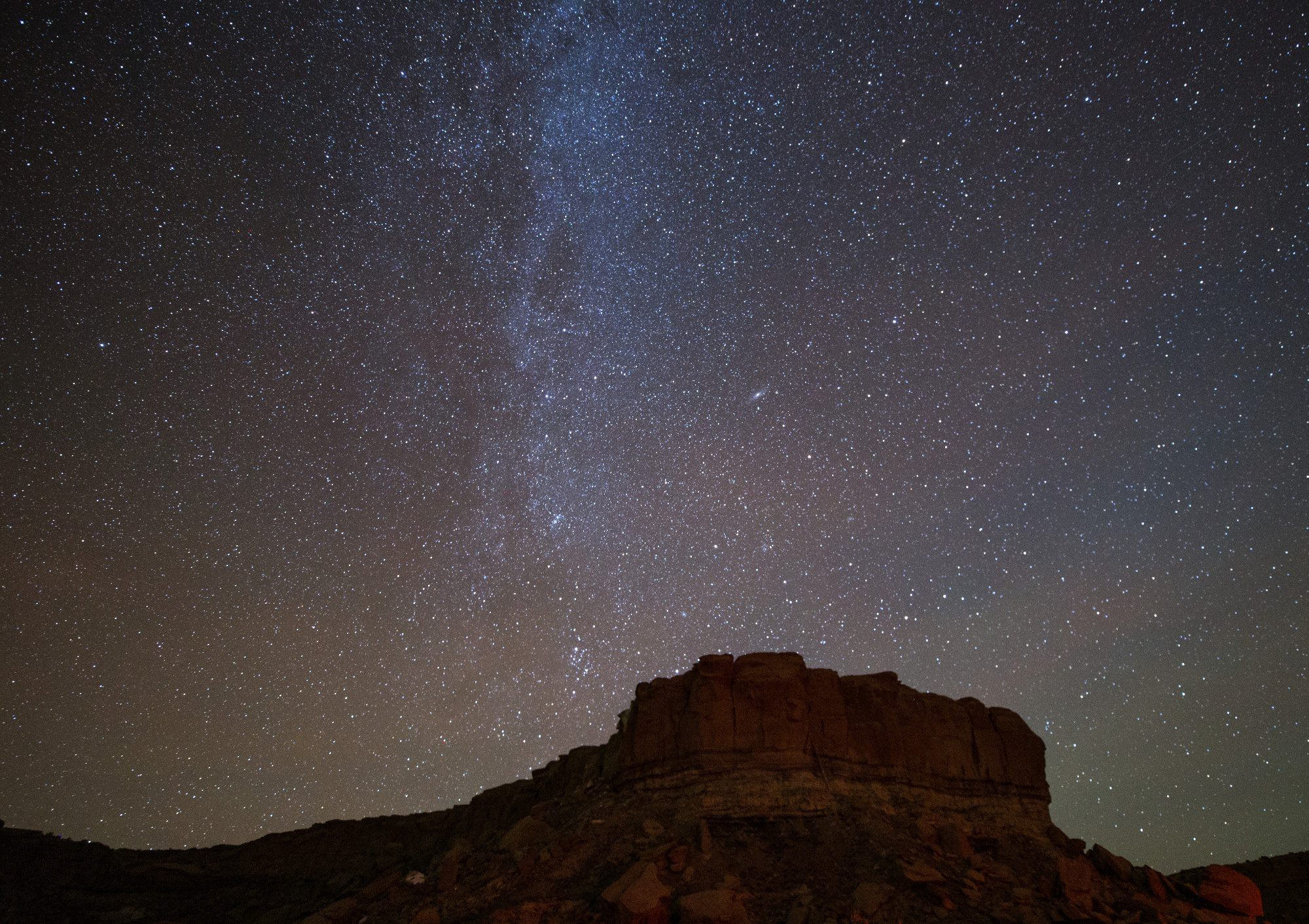
The ultimate US ghost towns: exploring ancient Native American settlements and culture, and camping under the stars
- Across the Four Corners region in the US are a wealth of ghost towns and rock art that give clues to how the Ancestral Puebloan people lived
- The Chaco Culture National Historical Park is also an International Dark Sky Park; a campground allows stays that provide incredible views of the night sky
I descend a wooden ladder leaning against bare rock to reach the canyon ledge and a path along which I pass pinyon pine and Utah juniper. Cottonwoods below me glow yellow in the crisp morning light of late autumn.
Ahead, standing in a sheltered nook in the canyon, is what is left of a village. Between the 8th and 12th centuries, it was home to around 100 people.
Now, only swifts and swallows live here, darting in and out of a rocky canopy over rooms that were used to store corn, beans and squash, and shelters with curved walls, corner windows and T-shaped doorways. Some spaces can be accessed only by a ladder and at the front is a small plaza with sunken circular ceremonial chambers, called kiva.

The Cliff Palace is one of more than 600 ancient cliff dwelling sites in Mesa Verde National Park, in southwest Colorado. This is Canyon Country, and across the Four Corners region, where the states of Colorado, Utah, Arizona and New Mexico meet, are a wealth of monuments, ghost towns and rock art left by the Ancestral Puebloan civilisation.
If the Southwestern US makes it onto traveller itineraries, it is typically for Arizona’s Grand Canyon and the mittens, or isolated hills, of Monument Valley. Among the reasons to take a road trip around the US, the ruins of the mysterious Ancestral Puebloan people, also known as Anasazi, hardly figure.
Ghosts of the past haunt Malaysian town some see as a future tourist draw
Relics of the Wild West may attract tourists but it is the hundreds of hidden Ancestral Puebloan sites that are America’s ultimate ghost towns.
When first discovered by archaeologists, the floors of many of the Four Corners ruins were scattered with pottery, and silos still contained what was left of full grain stocks. The population appears to have left the region over a couple of generations during the 13th century – possibly because of overpopulation or drought.
“They left so many things because they didn’t have the wheel or beasts of burden, like cattle or horses,” says Davin Nez, a Mesa Verde National Park guide. “So they carried all their important things in backpacks and started migrating, one family at a time.”

Their descendants are the Hopi, Zuni, Acoma and Laguna tribes, members of which still return to the Ancestral Puebloan sites to pay their respects.
Mesa Verde is on the edge of the Navajo Nation, the largest parcel of land held by a Native American tribe in the US and itself home to many Ancestral Puebloan sites, each one unique.
There are no hotels or lodges at these parks, but a spot at first-come, first-served campsites costs less than US$20 per night. The sites are neat and ordered, and come with picnic tables, BBQ pits, tent pads and flat tarmac.

We rented a vehicle from Denver and drove seven hours to Mesa Verde to begin a 10-day tour of Ancestral Puebloan sites.
After the cliff dwellings of Mesa Verde, the structures at Hovenweep National Monument are a surprise. The stone buildings are varied in style; there are square towers, round towers, houses built around and on top of boulders and D-shaped homes perched on outcrops. Some have already crumbled to rubble.
Two more small parks follow.

Natural Bridges National Monument has small dwellings scattered in the high reaches of a winding, wet canyon, across which water has carved three bridges: Kachina, Owachomo and Sipapu.
The equally remote and quiet Navajo National Monument, in northern Arizona, has three large cliff dwellings, though only one can be easily viewed.
Having visited four parks dotted with ancient dwellings, we feel like we have learned at least the basics of the Ancestral Puebloans – or what is known about them – so we are unprepared for the civilisation’s apex: the Chaco Culture National Historical Park, in New Mexico.

Accessed via a dirt road that barely deserves the name, Chaco Canyon’s grandest sight is Pueblo Bonito.
The largest and best preserved of the canyon’s “great houses”, this D-shaped settlement has multistorey buildings and a considerable plaza dotted with sunken kivas. It is reminiscent of Mesa Verde’s Cliff Palace in design but of a different magnitude; it takes us two hours to explore.
A mile away is Casa Rinconada, a much looser and less impressive settlement, but one with a ridge containing Chaco’s Great Kiva, which is thought to represent the sky. The rising sun on the solstice can be seen through several aligned doorways facing east.

“The building is so amazingly aligned to modern precision north, south, east, west, but you can also see the sun’s rising position change on the horizon over the year.”
It is believed that Ancestral Puebloans visited Chaco for astronomical events, and the rest of the canyon is littered with alignments and petroglyphs depicting, among many other things, flute players, dogs and solar eclipses.

After visiting more modest Ancestral Puebloan sites, seeing the constructions of Chaco feels like being at the centre of a culture while simultaneously being in a very remote place.
That sense of deep time continues after the sun sets, at Chaco’s Gallo Campground. The only place to stay for many miles around, the campsite encourages a red-light-only policy, which helps preserve one’s night vision. And for good reason; the Milky Way pours down behind Chaco’s Fajada Butte.
On Tuesday, Friday and Saturday evenings during the summer, visitors can peer through Chaco’s 25-inch (64cm) telescope, which is otherwise locked away in the park’s observatory.

A sign close to the Gallo campsite points to a petroglyph destroyed by graffiti, while a nearby rockfall has recently flattened several cliff dwellings below. Civilisations built in the region’s tiger-striped sandstone cannot last forever and at archaeological sites across the US Southwest, the remains of the Ancestral Puebloans are gradually returning to nature.
“They added their own support beams in their time,” says Nez, pointing out a flat on top of a vast cracked boulder at Mesa Verde’s Cliff Palace. There are now steel supports underneath much of the building. “There are cracks that start from the bottom and go to the back, and walls push and pull on each other,” he adds.
The US has a spectacular ancient culture hiding in plain sight but “everything will eventually complete its life cycle”, says Nez.
“And folks are OK with that.”

